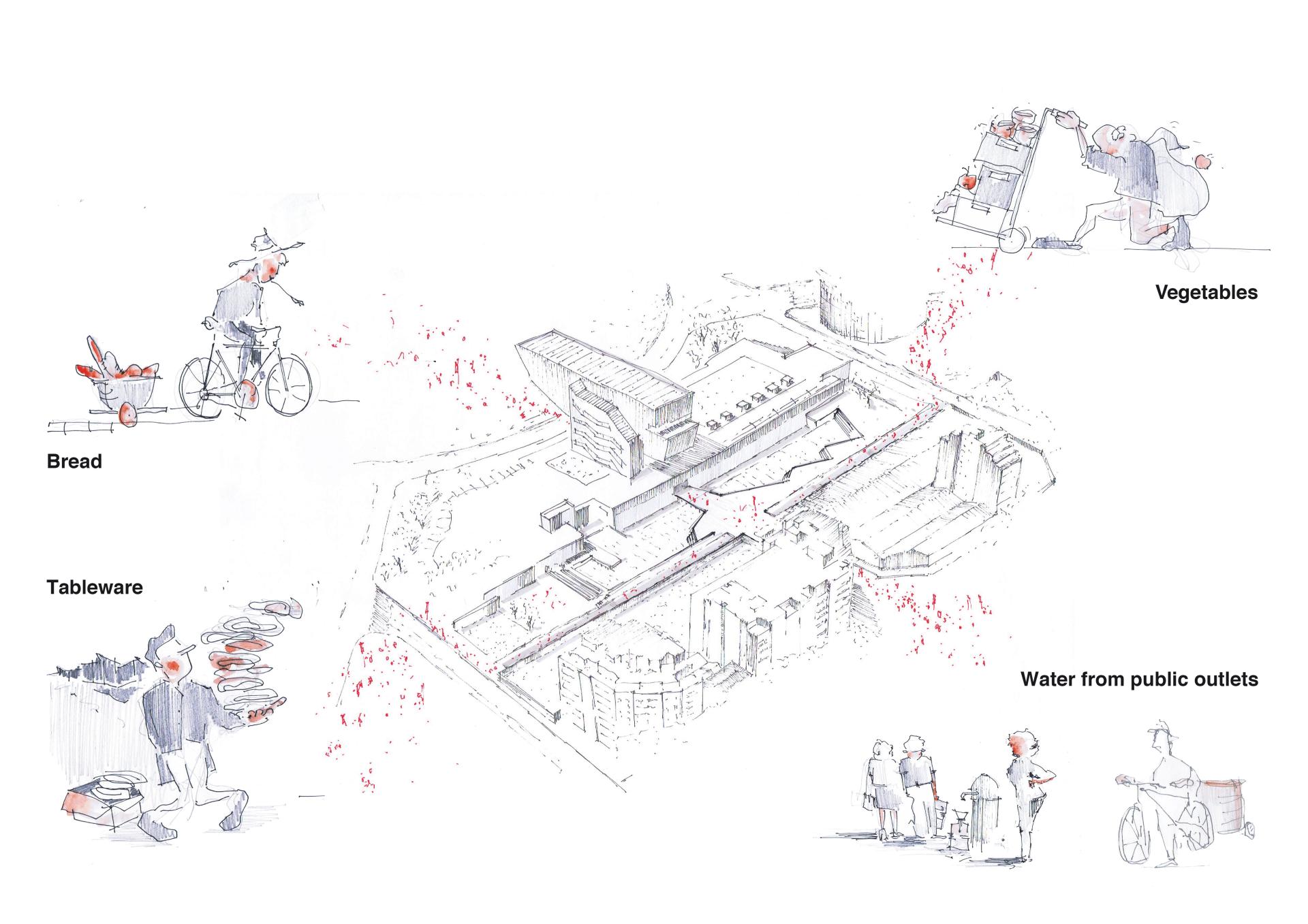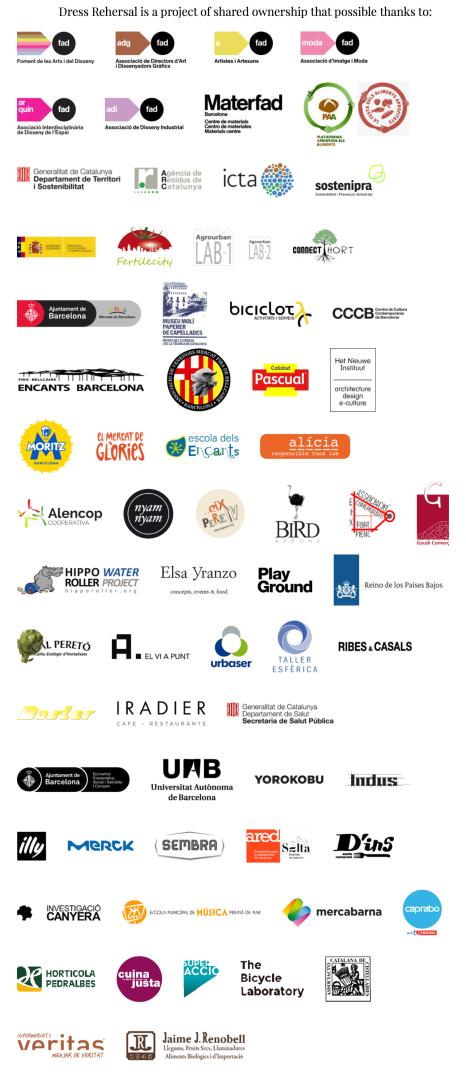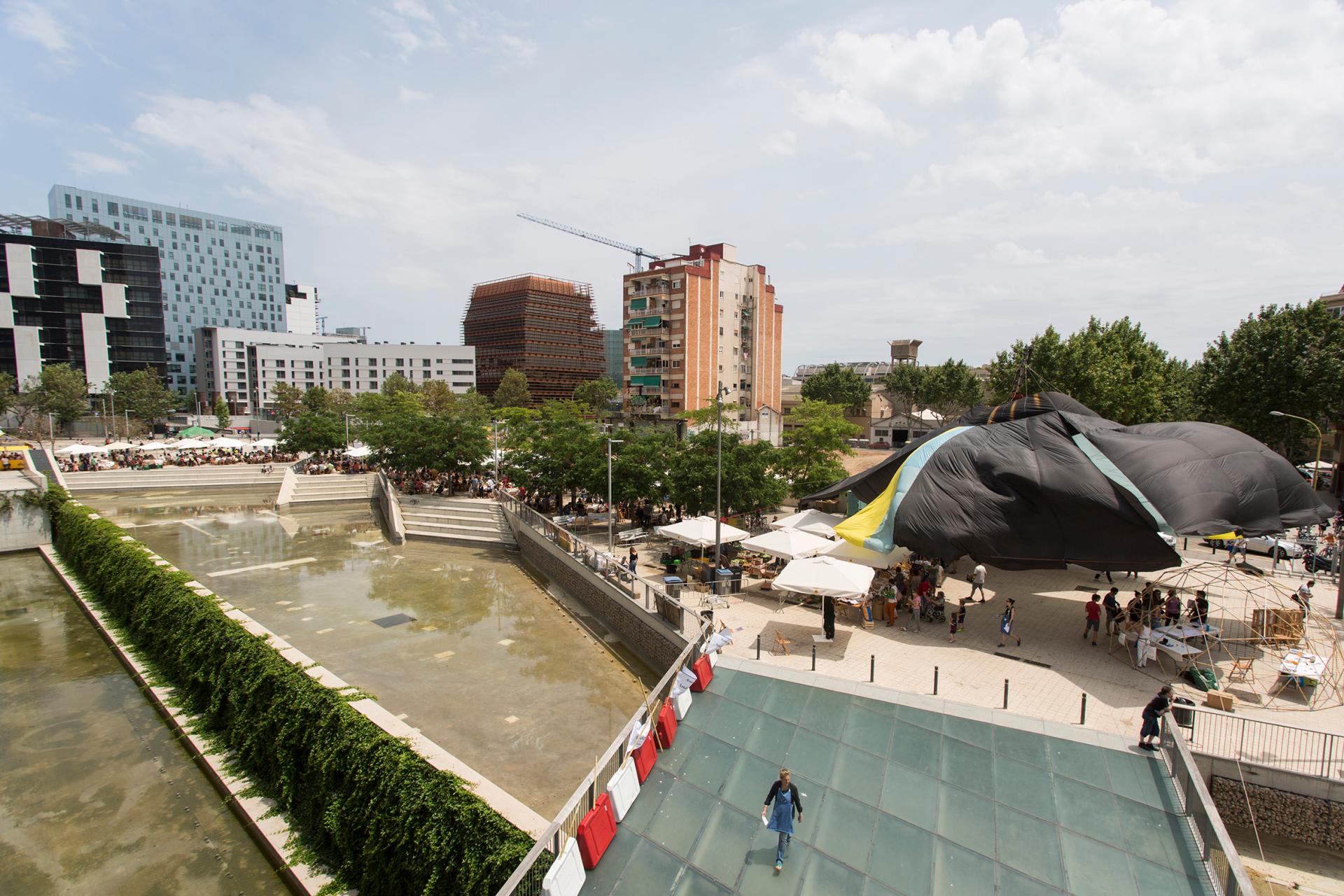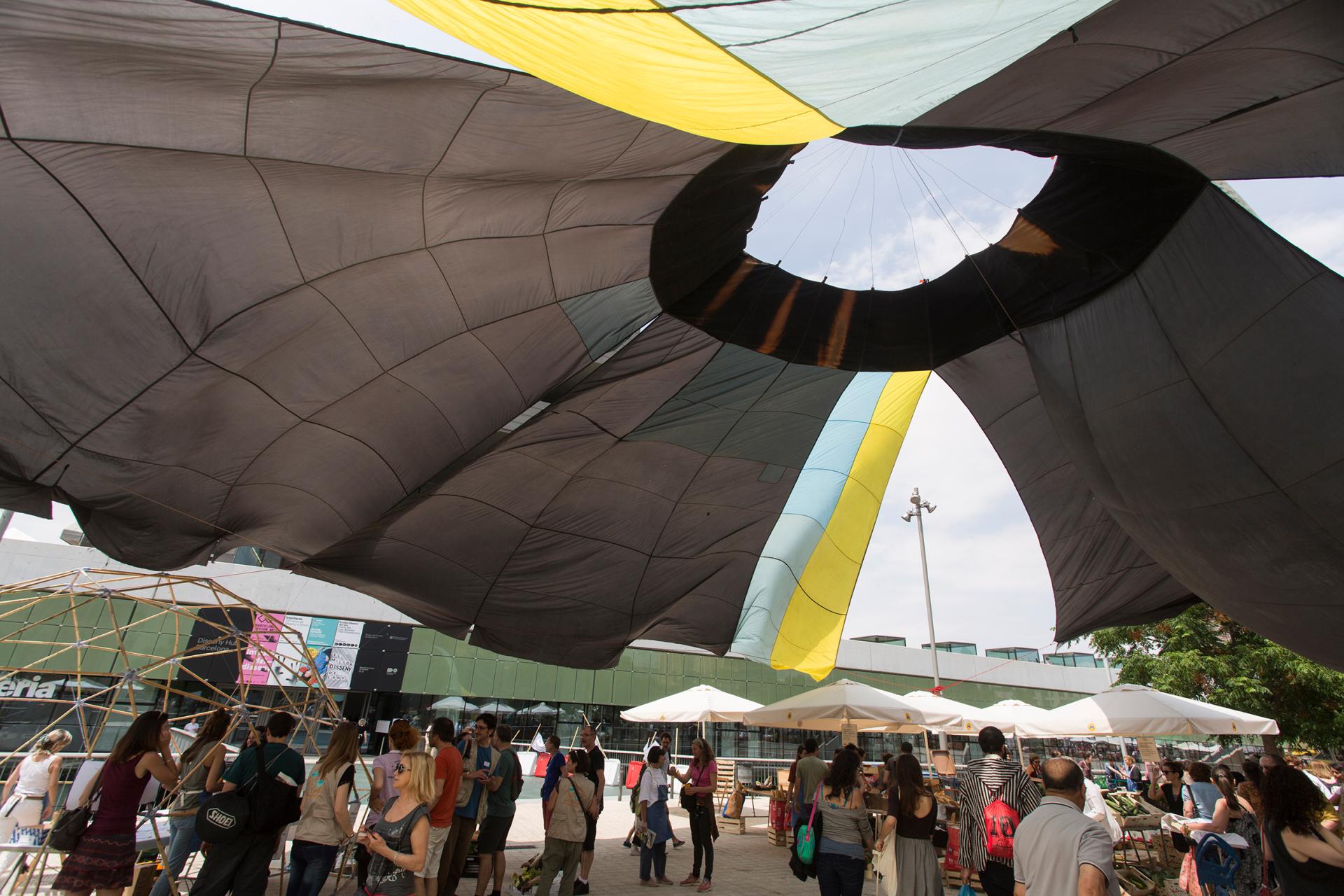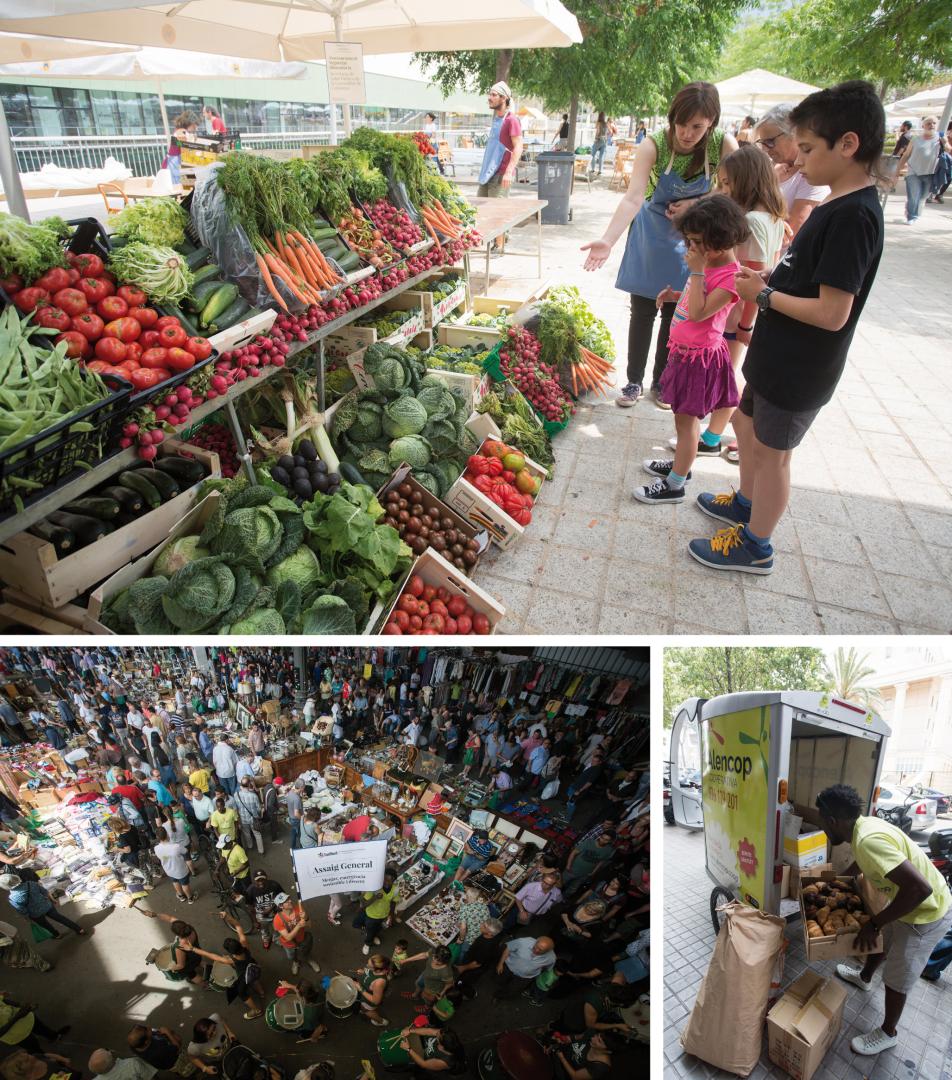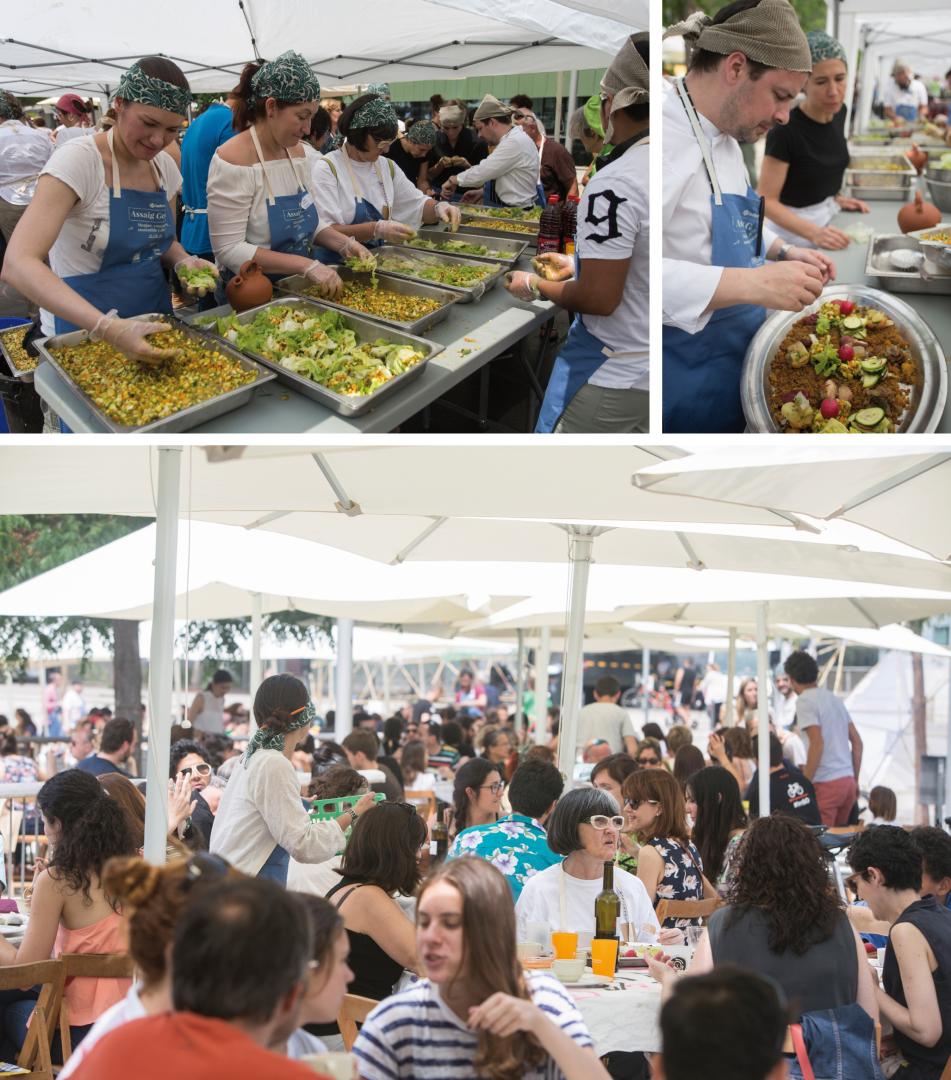Dress Rehearsal: Ephemeral Urbanism
Basic information
Project Title
Full project title
Category
Project Description
On one day we would act in a way that is coherent with the behaviour of a city committed to reducing food waste. We did this by organizing a large banquet for 900 diners in which all decisions addressed the challenge at hand. This rehearsal was a collaboration with neighbours, food markets, cooks, volunteers, or a scientific team that evaluated results based upon environmental, social, nutritional, economic and logistic indicators. Dress Rehearsal is a new tool of participatory urbanism.
Project Region
EU Programme or fund
Description of the project
Summary
How can design help to reverse the environmental problems that food waste generates? This is the question that we asked ourselves when FAD (Fostering Arts and Design), Spain’s national association of designers, commissioned us (Daniel Cid, Eva Serrats, Francesc Pla) to curate an exhibition at Barcelona’s Design-Hub on this theme. It was then that we decided not to mount an exhibition, but to instead organize a sustainable, popular, urban and delicious gastronomic event to be called “Dress Rehearsal”. This project investigated, from this point of departure, the capacity of ephemeral urban design interventions to rehearse, demonstrate, and communicate the possibilities of environmental change. On one day, specifically June 11th, 2016, we would act in a way that is coherent with the behaviour of a city committed to reducing food waste. We did this by organizing a large banquet for 900 diners in which all decisions addressed the challenge at hand. This rehearsal was a collaboration with neighbours, activists, farmers, local shops, food markets, cooks, volunteers, and a scientific team that evaluated results based upon environmental, social, nutritional, economic and logistic indicators; an initiative whose purpose was to stage a socially conscious communicative action.
Curators and designers: Daniel Cid, Francesc Pla, Eva Serrats
Main collaborator: PAA (Plataforma Aprofitem els Aliments, movement for harnessing food)
Commission: Fostering Arts and Design (FAD), Barcelona
This project has a website that contains: Objectives, Scientific Evaluation Data, Gallery of images, Recipes, News Generated during the communication campaign, Map, logos of participants (Catalan, Spanish and English) and Short Documentary with (English Subtitles at Youtube). See Website:
http://fadfest.cat/assaiggeneral/post/ca/index.html
Key objectives for sustainability
Apart from any qualitative findings that this design experiment could generate, quantitative data would be fundamental for its legitimation. For this reason, a scientific team whose responsibility would be to evaluate the final outcome on the basis of environmental, social, nutritional, economic and logistical indicators was incorporated within the project. All gleaned foods were weighed and registered, as was all the waste generated by the event, after which comparisons made with a standard banquet.
Of the 3,06 tons of food that were gleaned, 1,235 kg were utilized for the event while the rest was donated to participants. 400 kg of organic waste was produced with 0 improper disposal (non-organic waste). Nearly 87% of food originally intended to be discarded was used. Additionally, 96% of all the rubbish generated by the event was recycled.
Ecological footprint: the amount of food that was saved from being wasted amounts to 3,000 m2 of crop land. Carbon footprint: 4 metric tons of CO2 were prevented from being emitted thanks to the use of gleaned foods. Water footprint: 250,000 litres of water were saved. With these figures, the scientific team concluded that Dress Rehearsal performed environmentally much better than a standard banquet.
By using bicycles and vehicles that run on alternative energy (natural gas, liquified gas, or electricity) instead of diesel to transport supplies from the central market and the local shops, 42% less CO2, 67% less NOX and 84% fewer airborne particulates were emitted.
Taking into consideration the World Health Organization recommendation of a daily intake of 2,000 Kcal (distributed over 5 mealtimes), the meal served at Dress Rehearsal (840 Kcal) turns out to be better balanced than a standard meal (1050 Kcal).
In addition to saving over 4,500 € in groceries, from a social point of view the event involved 1500 persons, among whom 213 were volunteers who gleaned, transported, set up, cooked, e
Key objectives for aesthetics and quality
The project took shape mainly through meetings --a great many. These were the basis for generating the content, designing the different tactics, formalizing the different design actions and planning the production. Images were not made to seduce a client or a jury but to make the project understood by collaborators and community at every moment. Capacities belonging to design, specifically expression and representation, were placed at the service of the community. At the same time, it can also be said that the very format of Dress Rehearsal acted as a prototype in progress or a living model at full 1:1 scale, offering a collective simulation strategy for conceptualizing and representing possible futures. On that case design, or urban design, can be understood as a process of prototyping rather than a generator of prototypes; an action where the designer, mobilized by an experiment or a trial, allows their project to be in constant transformation, collecting the changes that appear throughout a process of joint experimentation. In this sense, and as we will see, our role as a curators and designers was to be attentive to the opportunities or creative improvisations that arose in the development process; a manager of opportunities capable of incorporating each of the possible collaborations and proposals that emerged according to plan, more or less. A designer who, while engaged, as mentioned previously, in a process of navigation shared and listened, detected and interpreted, and promoted the recycling and the reuse of existing structures.
Dress Rehearsal explored how ephemeral design can showcase and promote environmental change. Specifically, how certain tactical, temporary, and participative urban planning actions permit, through the strategic capacity of design, to ‘rehearse’ how a city could behave in coherence with the challenges posed by our current food production and consumption system.
Key objectives for inclusion
In Europe the 42% of food waste occurres in the domestic sphere. Seen in another light, consumers we have a significant potential power in our hands. By changing our habits when buying, storing and cooking food, we can provoke change (economic, social and environmental change). Thus, everything was set up to impact positively on our consciences. Of course, to combat food waste it is necessary to legislate in support of the cause and to remove existing legal barriers, fight against industrial and commercial bad practices, financially and fiscally disincentivize waste, and demand more transparency from companies and exemplarity from institutions and the public sector. But eating together and thoroughly enjoying every dish until nothing is left is also a transcendent act in the struggle against these bad practices. It is an essential step toward promoting new habits (which are nothing more than those our ancestors already practiced) and imbuing food with the value it should really have. Dress Rehearsal sought to instill precisely the kinds of emotional changes that would make apparent the degree to which food waste is a serious economic, social and environmental problem that affects society as a whole; the solution of which requires commitment on the part of all. Indeed, without the necessary collaboration of the different food chain levels (intermediaries, markets, shopkeepers, cooks or diners, as well as the PAA, the FAD or the municipal administration, or even the local producers) involved in staging this street banquet, then all those vegetables, fruits and loafs of bread would have gone to waste.
Results in relation to category
This project was made with activists, neighbourhood associations, libraries, shopping streets, civic centres, research centres, cooperatives, urban gardens, businesses, cooking schools, primary or secondary schools, markets, stores or restaurants. Meet, explain, listen, share, negotiate and build together; these were the actions that were most repeated throughout the design process. It was by discussing matters from different points of view that project decisions were made conjointly, without preconceived ideas and with constant revisions. In the face of these open work processes we equate the work of a designer with that of a navigator: someone who gives meaning and direction to a complex and diverse network of actors, not unlike Dress Rehearsal. In fact, the building of a network of relationships did not stop until the project was completed, either because needs arising on the fly required new contacts, or because little by little the project became known and voices that we were not able to detect at the beginning joined us later; groups of people with different perspectives but with common interests operating independently from each other but, upon joining the rehearsal, generated a ‘communities of interest’. Indeed, this event activated connections between people and communities committed to defending and developing other, more sustainable ways of living in the city. And all with the aim of prefiguring possible futures for the city that have been conceived locally by heterogeneous communities. The credits page of the project expresses its very collaborative character. It would be very interesting to recount each of the stories that emerged from each of the encounters generated between the different parties, but this surpasses the limits of a submission of these characteristics. Each name that appears was in one way or another involved in the decision making process.
How Citizens benefit
To us, this signified a very clear declaration of intentions, namely the desire to put to work the association of designers that recently moved into the iconic Design Hub Barcelona building together with the surrounding neighbourhood and commercial associations. With Dress Rehearsal we explicitly intended the FAD to learn to build community in partnership with neighbours. We understood this project from the very beginning as an experiment in the service of the city, which is why we sought and immediately received the involvement of personnel from the municipal government. Local institutions such as city halls are faced with new social challenges such as collaborative decision-making regarding urban policy. City halls have to change their traditional role, find new ways of doing things that are free of monopolistic positions when it comes to the resolution of collective problems, in which leadership becomes shared with other agents on a basis of equality, and in which the creation of new tools is promoted that permit the involvement of citizens in finding creative, innovative solutions. With Dress Rehearsal, our aim was precisely to propose a new tool or form of participatory urban planning conceived as a design experiment that is inclusive, urban, temporary and evaluable. Moreover, we aimed to promote a new role that design associations such as the FAD can play within these processes of social research. Without a doubt, real learning situations such as Dress Rehearsal can push designers to introduce themselves to neighbourhoods and local institutions and act as agents in everyday design actions; as spaces for experimentation through a strategic capacity that is proper to design.
Innovative character
As a public street action, Dress Rehearsal vindicated new forms of urban planning that are ephemeral and participatory, reversible and recyclable, and conceived as a multiplicitous, street-level design experiment that is temporary and evaluable. A festive design action intended to temporarily change, for one day, established norms with more desirable ones.
As a design project, it sought to vindicate the role of the designer as an activator who gives meaning and direction to a complex and diverse network of actors. A process that, through the act of sharing, is readjusted and able to accept the changes or opportunities that emerge.
Within a social context, this event sought to activate connections between people and communities committed to defending and developing more sustainable ways of living and nourishing ourselves. These range from an environmental studies research center investigating hydroponic agriculture, or the central market of Barcelona, to a group of neighbors who manage a community garden or a neighborhood grocer. The project revealed the role that designers' associations such as the FAD can play in social research processes in which design connects with the ordinary.
At the level of food sustainability, this banquet sought to demonstrate that in a city such as Barcelona, nourishment can take place in ways that are more responsive to the challenge of food waste. For this to happen, it is necessary, as occurred in Dress Rehearsal, for all the agents in the food chain to commit. But it is also essential to promote resourceful cooking that is moreover closely linked to local commerce, and therefore resilient; not to mention new eating habits capable of understanding that imperfection is entirely in the eye of the beholder.

